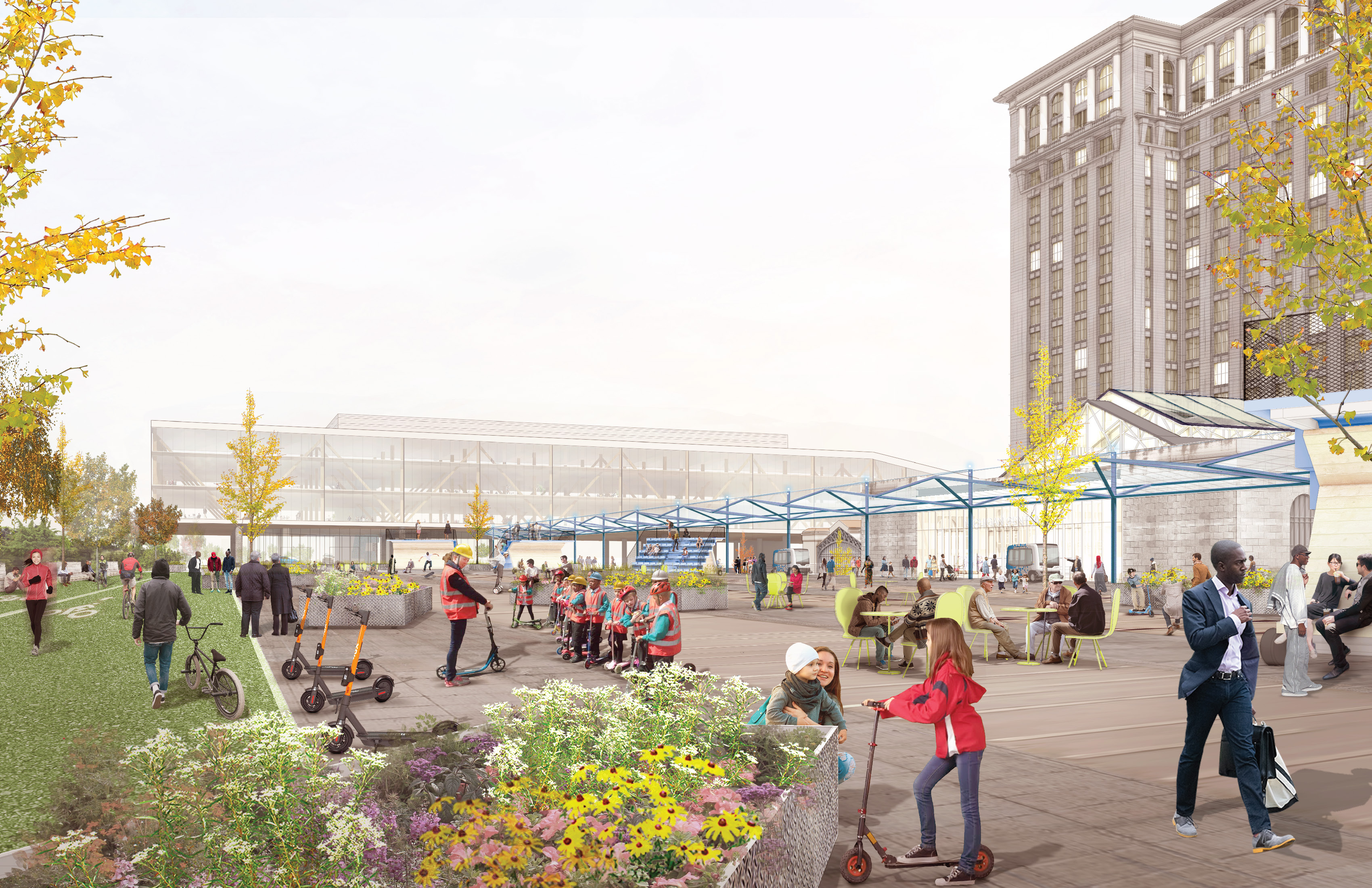
During the post-World War II era, U.S. automakers achieved far more than transforming the country’s transport systems and infrastructure (for better or worse). Companies like General Motors and Ford also had an impact on American architecture that reached its zenith during the 1950s and 1960s. Designers including Eero Saarinen and Charles Eames left their mark on Detroit and much of Michigan, whether it was at the massive GM campus in Warren, Michigan, or the iconic mid-century tables and chairs from the likes of Charles and Ray Eames that graced the offices of the Big Three automakers. Mid-century designers had a role in influencing the look and feel many of the classic cars of that era, such as the Ford Mustang Mach-E interior.
While New York and California are often credited for being the leaders in 20th-century design, Michigan served as the laboratory of such innovation, and to this day much of the state served as an open-air museum of architecture and design long before shows like Mad Men made the mid-century vibe cool.
Yet as much as the automakers’ contribution to making Detroit America’s wealthiest city in 1950, the industry also exemplifies the Motor City’s decline. There’s no shortage of analysis and commentary on Detroit’s long decline and its fitful recovery of the past decade. But one building that sums up Detroit’s rise, decline and hope for the future is scoring a second chance: Ford is investing in the majestic Michigan Central Station and its surrounding neighborhood.
A new beginning for a Detroit architectural icon
Corktown, a short hop from downtown Detroit, is a microcosm of American history. Settled largely by the Irish in the mid-19th century, Corktown then became home to Germans and eventually Maltese around 1900. Later on Latinos from Mexico and the U.S. Southwest moved in to work in the automobile assembly plants. After World War II, large tracts of the neighborhood were demolished to make room for factories, an investment that never occurred.
Looming over Corktown is Michigan Central Station, Detroit’s rail hub that bustled for decades until Amtrak’s last train departed in 1988. For years, the 13-story Beaux-Arts tower’s future was in doubt until Ford bought the building in 2018.
Now, the 107-year-old station and surrounding grounds will be the home of Ford’s future. Ford describes the complex as an upcoming “innovation hub” where the automaker will test new developments in transportation, including autonomous cars and all-electric vehicles.
From a rail hub to next-gen transport
So far, Ford appears to be keeping its promises. Recently the company and Detroit’s city government released a report describing how Ford has made good on the vast majority of the 40-plus community development commitments it made to the Corktown neighborhood. Part of this progress is by design. In 2016, Detroit’s residents voted to approve a measure requiring developers of large-scale projects to work with local residents so they have a voice in any such process.

The results could rival, if not surpass, the head-spinning grandeur of some of Silicon Valley's most vaunted corporate headquarters. This isn’t a campus gated off from Corktown. When the refurbished and rebuilt 30-acre complex opens as planned in 2022, open spaces and street art are among the features that will show Ford’s innovation hub will be not be imposed on Corktown, but integrated with it. Chain link fences, barbed wire and unsightly power lines will give way to bike lines, green spaces and architectural features that will harness natural light. And while Detroit may never say goodbye to the car, note that this complex’s parking garage will be offset from the rest of the buildings, encouraging workers taking up the more than 1,200 parking spaces to get their daily steps in as they begin and end their days at the campus.
“Few works of architecture better embody the past, present and future of Detroit like Michigan Central Station. This plan — led by Ford and forged in collaboration with local stakeholders — provides a vision for how the reimagined station, with the public spaces and buildings that surround it, can together become a unique and authentic destination for community members, innovators and visitors alike,” Vishaan Chakrabarti, the founder and creative director of Practice for Architecture and Urbanism, said in a recent Ford press announcement.
Image credits: Courtesy of Practice for Architecture and Urbanism (PAU)

Leon Kaye has written for 3p since 2010 and become executive editor in 2018. His previous work includes writing for the Guardian as well as other online and print publications. In addition, he's worked in sales executive roles within technology and financial research companies, as well as for a public relations firm, for which he consulted with one of the globe’s leading sustainability initiatives. Currently living in Central California, he’s traveled to 70-plus countries and has lived and worked in South Korea, the United Arab Emirates and Uruguay.
Leon’s an alum of Fresno State, the University of Maryland, Baltimore County and the University of Southern California's Marshall Business School. He enjoys traveling abroad as well as exploring California’s Central Coast and the Sierra Nevadas.














